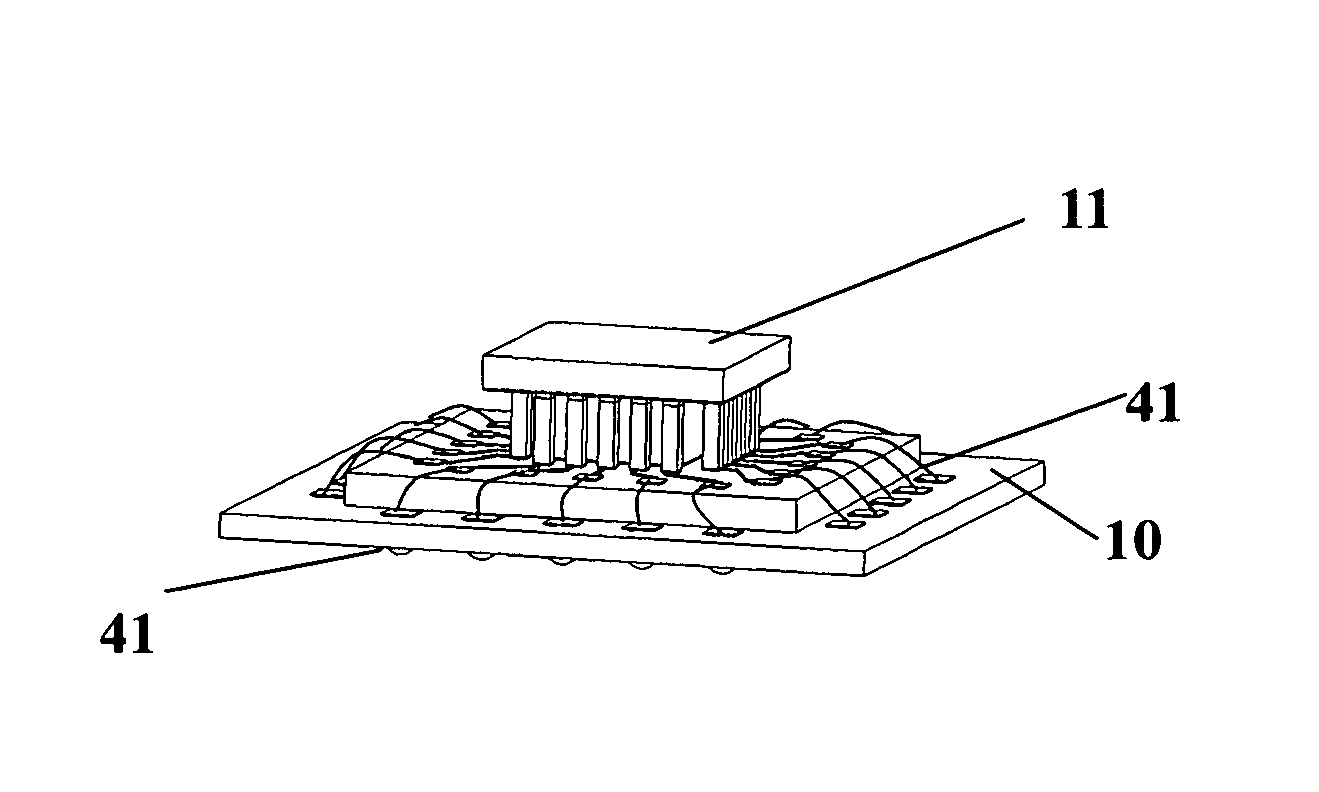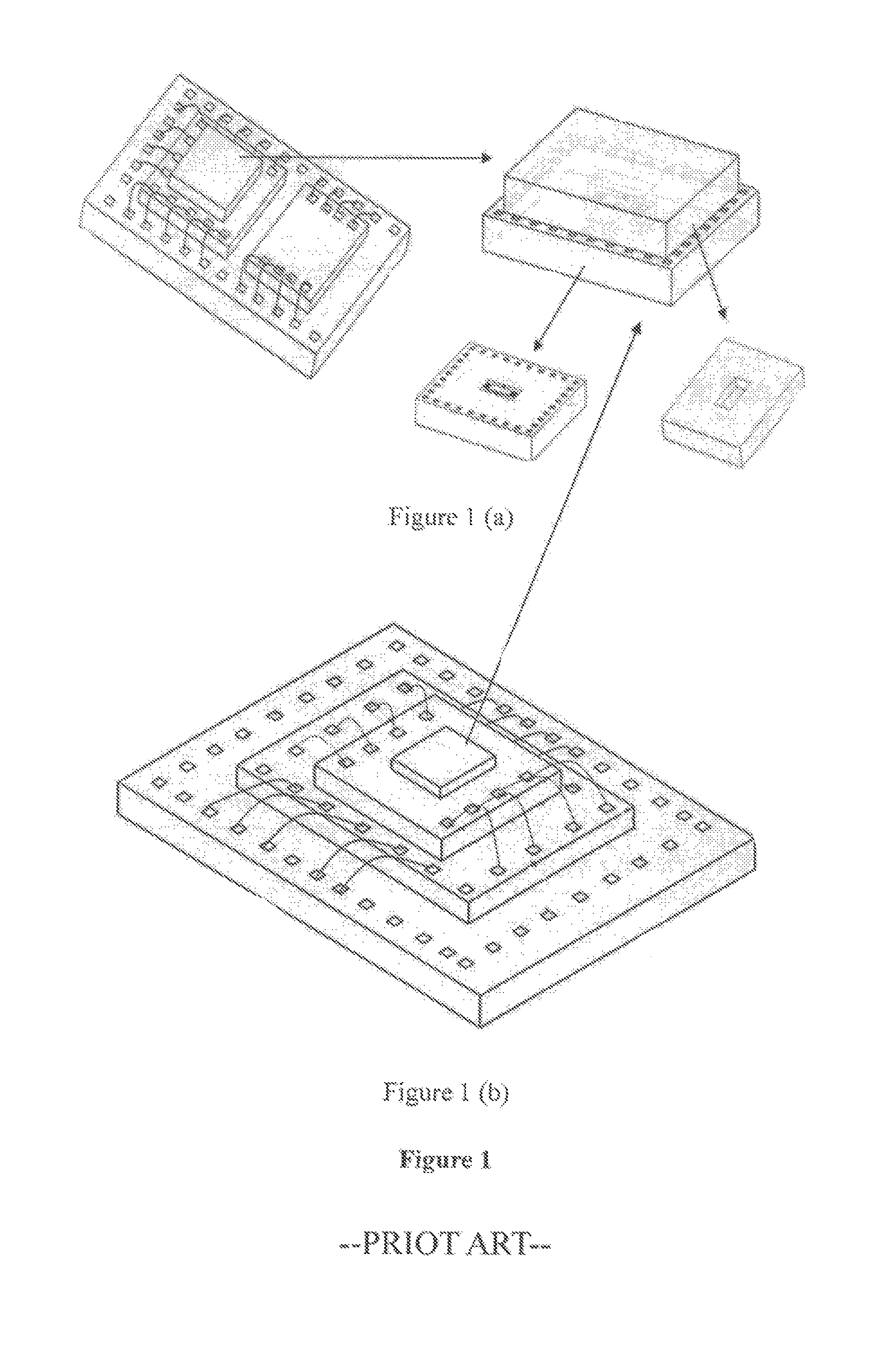Method for packaging micromachined devices
a micro-machined device and packaging technology, applied in the direction of semiconductor devices, semiconductor/solid-state device details, electrical apparatus, etc., can solve the problems of poor process reliability, serious affecting the performance and vacuum level of mems products, and insufficient active space for motion devices, etc., to achieve good process reliability, good mechanical properties, good thermal conductivity
- Summary
- Abstract
- Description
- Claims
- Application Information
AI Technical Summary
Benefits of technology
Problems solved by technology
Method used
Image
Examples
embodiment 2
[0037]Referring to FIG. 3, it illustrates the process flow for micromachined devices with environmental exposure such as microphone, gas sensor, flow sensor, humidity sensor, gauge pressure sensor etc. In order to allow micromachined devices to detect physical or chemical quantities from environment, the surrounding trench 24 and surrounding wall 25 has to form vent holes 26, shown as FIG. 3(a) and FIG. 3 (b). The packaging processes are similar to Embodiment 1, shown as FIG. 3 (c) and FIG. 3 (d), except the plastic encapsulation process is canceled.
embodiment 3
[0038]Referring to FIG. 4, in the above two examples, the pads 13 for wire bonding on the second chip 14 can also be connected to the backside of the second chip 14 by utilizing Through Silicon Via 17 (TSV) and then attaching solder balls or bumps 38 to directly become a fully packaged sensor or actuator. By deleting interposer 10, this embodiment can reduce volume and cost of micromachined products.
[0039]TSV technology has been applied in semiconductor industry several years and used to connect multiple ICs together in a package. The process of TSV comprises the following steps of: 1. forming through holes by using wet / dry etching technology or laser; 2. filling copper by electroforming. Electroforming is a common process, which soaks substrates in Cu bath with current. Furthermore, before filling through holes with Cu, deposing isolation layer and barrier layer are significant and seriously affect the performances of devices. Isolation layer is used to isolate Si-substrate and Cu ...
embodiment 4
[0040]Referring to FIG. 5, the second chip contains Micro Controller Unit 51(MCU), multiple surrounding continuous pads 52, corresponding to surrounding trench 12 on the first chip and at least three bump pads 53. One of the surrounding continuous pads 52 on the second chip is selected to be deposited into surrounding wall 18, which is corresponding to the surrounding trench 12 of the first chip and is depending on the size of the micromachined structures 54, shown as FIG. 5 (a). And bump pads 53 are also deposited into bump pillars 17 according to the signals or electric power required to I / O pad 19 of the first chip, shown as FIG. 5 (b). The advantages of embodiment 4 are that: (1) enhancing performances and forming the smart sensor by assembling MCU with the first chip; (2) providing the more flexible applications to different size of various micromachined structures 54, without redesigning the layout of MCU; (3) reducing the manufacturing cost. The packaging processes are simila...
PUM
 Login to View More
Login to View More Abstract
Description
Claims
Application Information
 Login to View More
Login to View More - R&D
- Intellectual Property
- Life Sciences
- Materials
- Tech Scout
- Unparalleled Data Quality
- Higher Quality Content
- 60% Fewer Hallucinations
Browse by: Latest US Patents, China's latest patents, Technical Efficacy Thesaurus, Application Domain, Technology Topic, Popular Technical Reports.
© 2025 PatSnap. All rights reserved.Legal|Privacy policy|Modern Slavery Act Transparency Statement|Sitemap|About US| Contact US: help@patsnap.com



